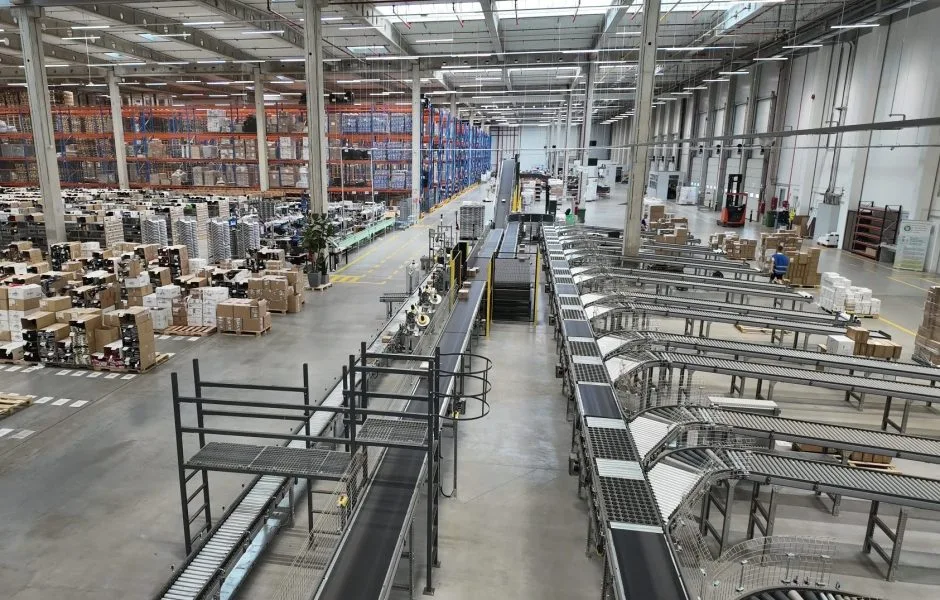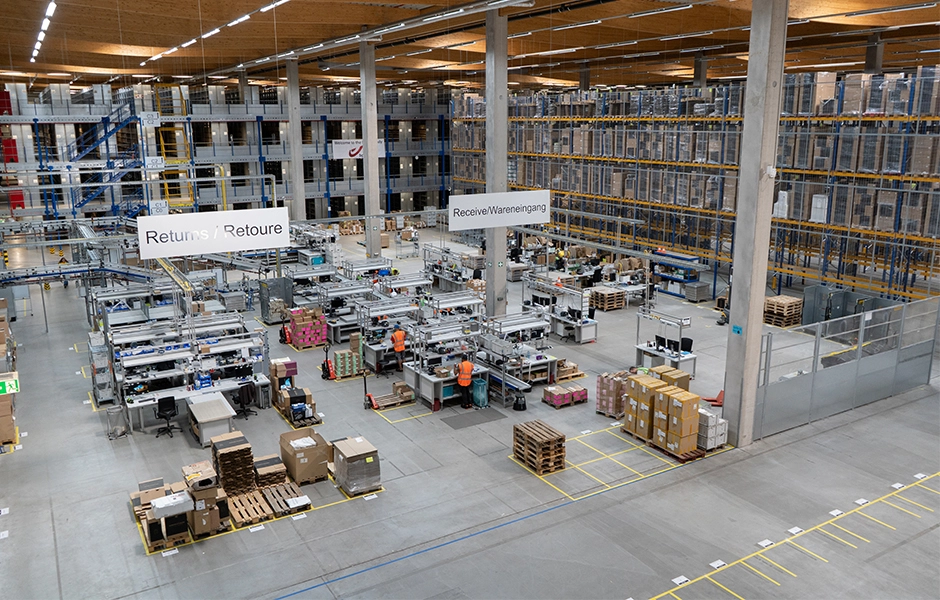Turn Returns into Opportunities With Reverse Logistics
In the fast-paced world of e-commerce, reverse logistics has emerged as a critical counterpart to traditional fulfillment. More than just handling returns, it encompasses everything from restocking and repairing to recycling products. As online shopping continues to grow, businesses must prioritize smooth, efficient return processes to meet rising consumer expectations.
In the bustling world of commerce, third-party logistics has always been the invisible force ensuring products reach their intended destinations. However, in the ever-evolving landscape of e-commerce fulfillment, a new facet has emerged — reverse logistics.
At its core, reverse logistics entails the processes and operations involved in returning a product, primarily in the e-commerce sphere. This isn’t merely about sending items back; a reverse logistics plan encapsulates a broader system of operations, covering product restocking, handling damaged goods, and recycling or disposing of products when necessary.
In today’s digital shopping era, where a single click can initiate a purchase, returns have assumed a paramount role. With consumers expecting seamless return experiences akin to their purchasing process, understanding and mastering reverse logistics has become crucial for businesses worldwide.

Understanding the returns challenge
E-commerce has revolutionized shopping, but not without its challenges. Recent studies suggest that online shopping return rates hover between 20% to 30%.
Common culprits for returns include sizing mismatches, particularly prevalent in the clothing sector; product misrepresentation, where the received item diverges from its online portrayal; buyer’s remorse, often spurred by impulsive online shopping; delivery failure, where the product doesn’t make it to the intended recipient; and receiving damaged or defective items.
Returns were once seen as a logistical headache and loss of profits, signaling unmet customer expectations and operational flaws. With e-commerce growth and the focus on customer experience, views are shifting. Businesses now see optimized reverse logistics as a chance to turn challenges into opportunities.
What is reverse logistics? The basics
Reverse logistics, in contrast to the traditional notion of logistics, deals with the processes that move goods from their typical final destination back to the manufacturer or similar location for the purpose of return, repair, remanufacturing, recycling, or disposal.
While traditional logistics ensures that the right products are delivered to the right places at the right time, reverse logistics manages products that, for various reasons, need to travel the opposite route.
Forward logistics refers to moving products from fulfillment centers or warehouses to consumers, covering warehousing, inventory management, picking, packing, transportation, and distribution. In contrast, reverse logistics manages products after sale or use, focusing on value recovery or disposal. Unlike the linear nature of forward logistics, reverse logistics is more complex, involving tasks like refurbishment, recycling, and repackaging.
The process of reverse logistics
When a customer requests a return, the product typically passes through a courier service to a regional center for quality inspection.
Based on its condition, a returned product may be restocked, refurbished, recycled, disposed of, or sent to the manufacturer for repair, helping to minimize costs and optimize resources.
Types of reverse logistics
Reverse logistics is a critical aspect of your supply chain management process, especially in today’s e-commerce-dominated retail environment. Here are the primary types of reverse logistics:
- Returns Management: With returns management, returned items are unwanted, defective, or didn’t meet customer expectations. For commercial returns, the goods may be returned due to overstock, seasonal changes, or other contractual agreements.
- Repairs and Warranty Recovery: When products are returned for repairs under warranty, they undergo fixing and are then shipped back to the end user or resold as refurbished goods.
- Remanufacturing and Refurbishing: In this type of reverse logistics, products are returned, disassembled, and reconstructed to restore them to like-new condition. This is often seen with electronics or automotive parts.
- Recycling and Waste Management: When returned goods are recycled, the raw materials can be extracted to ensure environmentally friendly disposal.
- Packaging Returns: Reusable packaging, such as pallets, containers, and bins may be returned to the supplier for reuse in the supply chain.
- Unsold Goods: Items that didn’t sell, especially seasonal products, may be returned from retailers back to distributors or manufacturers.
- End-of-life Disposition: Goods may be turned at the end of the product lifecycle. This can be for recycling, repurposing, or proper disposal to minimize environmental impact.
- Hazardous Material Returns: Hazardous material returns are those that might be harmful to the environment are public. These products are returned for their safe disposal or treatment rather than putting them in a landfill.
- Asset Recovery: Companies retrieve valuable assets from used, obsolete, or excess equipment or inventory.
- Lease Returns: Rentals, such as machinery and vehicles, are returned to the lessor at the end of the lease term.
Understanding the intricacies of these reverse logistics types is crucial for businesses, as effective management can lead to reduced costs, enhanced customer satisfaction, and more sustainable operations.
Economic advantages of optimized reverse logistics
Reverse logistics plays a pivotal role in customer satisfaction and the economic sustainability of a business. Efficient reverse logistics management doesn’t just mitigate the cost implications of returns; it can transform them into avenues of potential profit and value recovery. Here’s how:
- Reduction in Processing and Restocking Costs: An effective reverse logistics system streamlines product returns, reducing the costs associated with inspections, quality checks, and restocking. Automated systems and established return procedures can lead to significant savings in manpower and operational expenses.
- Enhanced Inventory Management: By efficiently processing customer returns and improving the reverse logistics supply chain, businesses can quickly reintegrate products into their inventory, allowing them to resell them faster. This not only reduces inventory holding costs but also ensures maximum product availability.
- Potential for Resale, Repurposing, or Recycling of Returned Goods: Not every return is a write-off. With the right process, products can be refurbished, resold, or broken down for parts — and anything left over can often be recycled to reduce waste.

Building brand loyalty through smooth returns management
Customer satisfaction extends far beyond the point of purchase. How a brand manages post-purchase experiences, especially returns, can significantly influence customer loyalty and perceptions. An adept approach to returns not only addresses immediate customer needs but also sets the stage for long-term trust and repeat business.
A hassle-free return policy promotes repeat business
A hassle-free return policy can be the deciding factor for many consumers. Customers value the peace of mind that comes with knowing they can easily return a product if it doesn’t meet their expectations. Brands that offer simple, straightforward return processes are more likely to see an increase in customer retention as customers come back for future purchases, viewing the brand as risk-free and customer-centric.
Importance of communication and transparency
A return process might be inherently smooth, but if customers are left in the dark, feelings of uncertainty and dissatisfaction can arise. Keeping customers informed in real-time — from acknowledging a return request to notifying them when a refund has been processed — helps build trust. Transparency about any potential return fees, timelines, or conditions ensures customers aren’t met with unwelcome surprises.
Developing trust through effective reverse logistics
An efficient reverse logistics system doesn’t just benefit a company’s bottom line; it also plays a pivotal role in building customer trust. When customers see that a brand handles returns swiftly and fairly, it fosters a sense of reliability. Over time, this trust can translate into brand loyalty, with customers choosing to shop with a brand not just for its products, but also for its dependable post-purchase services.
Leveraging technology in reverse logistics
Amid digital transformation, e-commerce businesses outsourcing fulfillment are focused on optimizing operations and improving customer experience. Technology drives this shift, offering solutions to old challenges. Reverse logistics, once a burdensome process, is being revolutionized by technology, reshaping how returns are handled:
- Role of AI and Machine Learning in Predicting Returns: AI and machine learning now enable businesses to predict returns by analyzing purchase data, customer behaviour, and product reviews. These insights help refine product descriptions, address issues, and adjust marketing strategies.
- Automated Systems for Processing and Tracking Returns: Manual processing of returns can be time-consuming and prone to errors. Modern automated systems, however, can significantly streamline the return process. From instantly generating return labels to tracking the status of returned products and initiating refunds, automation enhances efficiency while providing customers with a seamless experience.
- Benefits of Centralized Return Centers: A centralized return center streamlines high volumes of returns, achieving economies of scale by efficiently inspecting, sorting, and processing products. It also consolidates data, improving analytics and decision-making.
The transformative power of reverse logistics
In the evolving e-commerce landscape, returns present opportunities rather than obstacles. Businesses that embrace this shift can boost profits, brand loyalty, and reputation. Investing in strong, tech-driven reverse logistics is now essential for long-term success.
For businesses looking to pioneer in this transformative phase, partnering with logistics providers like Radial can make all the difference. Radial offers tailored solutions that simplify and optimize the returns process, ensuring brands stay ahead in this competitive eCommerce space. Leverage Radial’s expertise to transform your returns from challenges into invaluable assets.
Contact Us (EUR)
By submitting this form, you agree to our friendly privacy policy.
